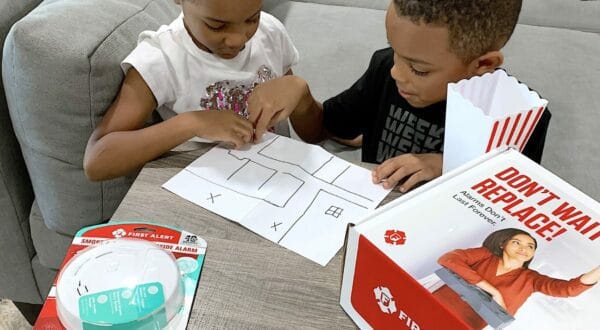
You’ll Love The Benefits of In-Home Occupational Therapy For Kids
In-home pediatric occupational therapy offers a range of significant benefits that cater to the developmental needs of children, especially those with disabilities or developmental delays.
This therapy focuses on enhancing a child’s ability to perform daily activities through therapeutic techniques that promote physical, cognitive, and social skills development.
By tailoring interventions to each child’s unique needs, occupational therapists work in the familiar and comforting environment of the child’s home, making it a valuable approach to pediatric care.
Below, take a look some of these benefits of in-home pediatric occupational therapy for children.

Enhances Functional Skills In A Comfortable Environment
One of the primary advantages of in-home pediatric occupational therapy is the ability to practice and learn functional skills within the context of the child’s environment. This setting allows therapists to utilize the actual objects and spaces the child interacts with daily, which can lead to more meaningful and sustainable improvements.
For example, tasks such as dressing, feeding, and personal care can be integrated seamlessly into therapy sessions, emphasizing practical life skills and independence.
Offers Individualized And Family-Centered Care
In-home therapy can provide a unique opportunity for tailored care plans to meet each child’s needs. Therapists can observe children’s challenges in their usual surroundings and adapt techniques accordingly. Also, this approach facilitates greater family involvement.
Parents and siblings can participate actively in therapy sessions, learning how to effectively support the child’s development. This inclusive approach empowers the family and ensures the therapeutic strategies are consistently applied throughout the child’s daily routine.
For families considering this option, seeking in home pediatric occupational therapy for children can be an excellent idea as it can provide a versatile and effective solution to meet their child’s developmental challenges.
Reduces Stress And Improve Engagement
Children typically experience greater comfort and less anxiety in their own homes as opposed to unfamiliar clinical environments. This sense of security can significantly diminish stress levels, which might otherwise hinder the effectiveness of therapeutic interventions.
In a familiar and secure setting, children are more likely to be engaged and motivated during sessions, critical factors for successful therapy outcomes. Additionally, in-home therapy eliminates the logistical challenges associated with clinical visits, such as:
- Travel time to and from appointments
- Waiting in unfamiliar, often crowded areas
- Adjusting to new and sometimes intimidating environments
These benefits can contribute to a more relaxed and productive therapeutic experience for both children and their caregivers, enhancing the therapy sessions’ overall efficacy.

Allows Early Intervention And Preventive Care
In-home pediatric occupational therapy can facilitates early intervention, which is vital for addressing developmental concerns as soon as they arise. This proactive approach is instrumental in altering a child’s developmental path and preventing minor challenges from escalating into more complex issues.
By engaging in the child’s daily environment, therapists can perform real-time assessments and apply targeted interventions more effectively than in a clinical setting.
This immediacy enhances the relevance and impact of the therapy and may decrease the future need for more invasive or intensive treatment methods.
Maximizes Developmental Opportunities
In-home pediatric occupational therapy offers unique advantages by utilizing the child’s daily environment and routines as a framework for therapy. Therapists can embed therapeutic activities within normal daily tasks, turning routine interactions into development opportunities.
For example, a therapist might use mealtime to focus on enhancing a child’s fine motor skills by practicing holding utensils or encourage turn-taking and communication skills during play sessions with siblings.
This method ensures that therapeutic interventions are practical and seamlessly integrated into the child’s life to promote consistency and the reinforcement of new skills.
Comes With Tailored Strategies For Diverse Needs
In-home pediatric occupational therapy is distinctively advantageous as it allows for the customization of strategies to meet the specific developmental and physical needs of each child. This personalization is crucial when addressing a spectrum of conditions such as sensory processing disorders, cognitive delays, or physical impairments.
Therapists can adapt to the child’s immediate environment, for example, by rearranging furniture to ensure safety and accessibility, or introducing sensory-friendly materials to enhance comfort and functionality.
This flexibility accommodates the child’s current abilities and challenges and promotes an optimized therapeutic setting that’s conducive to learning and development.

Provides Opportunity For Continuous Monitoring And Adjustment
The home-based setting of pediatric occupational therapy can provide a unique opportunity for therapists to continuously monitor and adjust their interventions. This ongoing evaluation is essential as it allows therapy to evolve in response to the child’s developmental progress or emerging needs.
Therapists can observe day-to-day interactions and modifications in the child’s behavior or skills, enabling them to make timely adjustments to the therapeutic plan.
This dynamic approach ensures that the therapy remains effective and relevant, which adapts to the child as they grow and change.
In-home pediatric occupational therapy offers a comprehensive approach to supporting children’s development in their most natural and supportive environment—their home.
By keeping the information mentioned above in mind, this therapy modality can enhance specific skills and contribute broadly to a child’s sense of well-being and overall quality of life.
Welcome to my blog! I am an activity mom of three and I have over 15 years of experience crafting, writing, designing and creating. My mission is to bring fun, balance and learning to your busy homes with activities, tips, inspiration, and organization!






